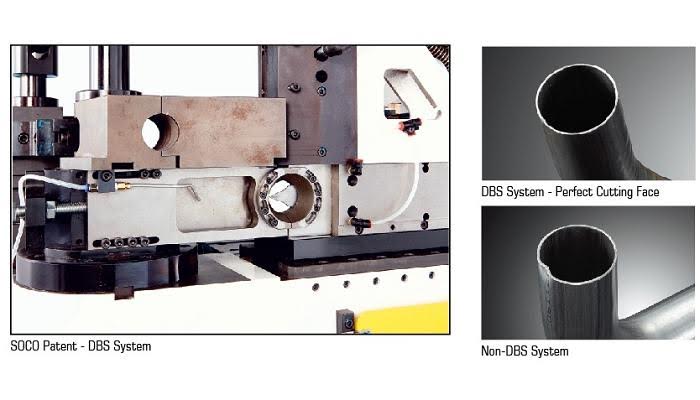What does cutting tooling do? Seems like a strange question but when it comes to tube cutting saw machine tooling there is more than one type of tooling and many types of cuts.
Fundamentally a tube cutting saw cuts tubing; the tube can be a round, square, or rectangle shape. There are different types of cutting tooling Including the following:
Tube Saw cutting
Tube saw cutting tooling is much like any other saw tooling.
Saw cutting provides a square cut within 1 mm profile tolerance. The disadvantage of saw-cutting tooling is that it produces shavings or chips, resulting in material loss from the tubing being cut. Tube fabricators usually need to wash or remove this debris from the finished tube and from the cutting area.
Blade shearing - (E.g., Machine model TC80 or TT)
The advantage of blade shearing is the speed of the cut. The machine cycle time is only 4-5 seconds. The end profile tolerance is 1.5 -3mm, depending on the wall thickness of the tubing. The disadvantage is the thinner tubes will be more out of round due to blade deformation, and the material slug from the blade cutting is lost material.
Dual Blade sheering (Market names TTPN or pre-notch)

The advantages of dual blade shearing tube saw cutting is speed and a high-quality 1-1.5 mm end profile. The speed of dual blade shearing is faster than saw cutting, with an average cycle time of 4-6 seconds.
The disadvantage is that the dual blade shearing tooling is more costly and requires two perishable blades that need to be replaced periodically. This tooling also results in two material slugs being wasted after each cut, one from each blade.
Rotary shear tooling (E.g., Brehm or Tru-motion)
Rotary shear tooling is positioned both inside and outside of the tubing to support the material being cut The tools are then oscillated to fracture the outside wall of the tubing.
The advantage is a fast cut in 1.5 to 3 seconds with no material loss to shavings or slugs. The disadvantage is that rotary shear tooling can only be used in straight line tube cutting due to the presence of a mandrel inside the tubing being cut.
Rotary facing or chamfer tooling. (Spin cut).
Tooling squares face or chamfer the end of the round tube to prepare the cut end for the next forming process. Rotary facing typically removes the potential of tube splitting from subsequent end-forming processes.
To learn more about tube-cutting saw machine tooling, please contact one of our applications experts today.